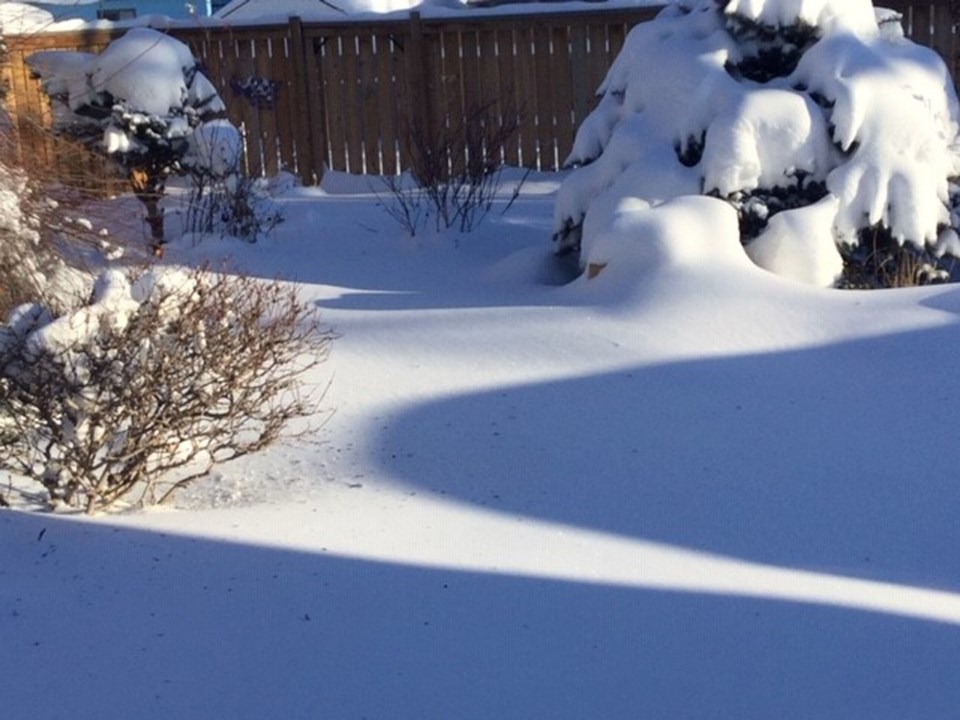YORKTON - Happy New Year! Keith and I send you wishes for a new year that is rich in bounty, blooming with good health and happiness, and yielding a bumper crop of happy adventures and opportunities!
The winter solstice was on December 21; the summer solstice will be on Friday, June 20, 2025. And by coincidence, there was hoarfrost on the trees on December 21. So if that gardening legend is true, we should be getting rain six months from that date—giving us rain possibly on the summer solstice! I didn’t notice that the hoarfrost was particularly thick on December 21, but I recall reading somewhere that is the hoarfrost is thick, we’ll get a heavy rain. Either way, it will make an interesting observation! Mark your calendars and let’s see if it happens!
Weather folklore in interesting, isn’t it. There are many interesting stories and folklore for January weather. In Sweden, it is said that the weather on the ninth day after Christmas, January 3, will be the same for nine weeks. St. Hilary’s day, on January 13, can sometimes turn out to be the coldest day of the year. And on St. Vincent’s Day, January 22, we should take note if the sun shines or not. If it does, the sun will be most welcome…but be prepared, because legend says that it will also be windy!
January is also the time when we have to start ‘gardening’ and care for the holiday plants that we may have been lucky enough to receive! Amaryllis are popular plants, and great conversation started among gardeners, because some gardeners are lucky enough to have amaryllis with very large flowers, multiple flowers, double flowers, or old bulbs that are still going strong. I did some homework and learned that amaryllis bulbs, with proper care, can keep on producing blooms for twenty years or more! So what is proper amaryllis care?
When our amaryllis is finished blooming, we should cut back the bloom’s stem to the top of the neck of the bulb. Do not remove the leaves. After this, we should keep the container where there is indirect light and continue to water it and take care of it for about three more months. Fast forward now to summer. When the leaves of the plant are starting to look messy and tired, late summer, we should stop watering our plant, and move the container into a dark and cool spot, perhaps a corner of the basement, for at least eight weeks. The bulb is going to rest now. By the end of October, we bring it out again, re-pot it if necessary, start watering it, put it in the light, and the amaryllis cycle will hopefully begin again.
Plants never fail to surprise us. I may have told you about an orchid plant we have that bloomed several times (yay!) but then started sending out many roots which grew so quickly and abundantly that we were afraid to touch it! It seemed very intimidating to take a knife and cut the plant. So we didn’t. The baby orchids that resulted, keikis (the sweet name for ‘child’ in Hawaiian) seemed to sit there for the longest time, until just a couple weeks ago when two orchid stems with buds appeared. Looking forward to this mid-winter gardening treat!
Let’s make a few garden resolutions together. First, to give thanks every day in the garden for С����Ƶ allowed to be custodians to a small piece of God’s creation. Second, make a promise to try at least one new thing this coming season. And three, to savor every gardening day with hope and joy. Thank you to our friends at YTW for the great work! Visit the hort society at www.yorktonhort.ca and have a lovely week!






